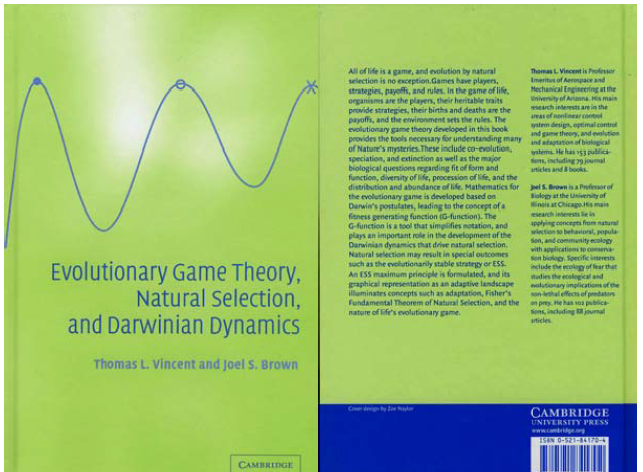Vincent, T.L. & J.S. Brown. 2005. Evolutionary game theory, natural selection and Darwinian dynamics. – Cambridge, Cambridge University Press
Abstract
In evolutionary biology, theoreticians have been in love with the potential effects of frequency–dependent selection for many decades. Bryan Clarke was one of the first who pointed out the capacity of this type of selection to generate biodiversity (1979), and that realization has spurred much theoretical research from the nineties of last century until now (Waxman & Gavrilets, 2005; Rueffler et al., 2006). For that reason, there is always much discussion about frequency–dependence and evolutionary games at conferences. At the 2005 conference of the European Society of Evolutionary Biology, a Swedish colleague insisted that I should read the then recently appeared book on Evolutionary Game Theory by Vincent and Brown. Few things kept me away from following his advise, among them a critical paper on their approach (Abrams, 2001). However, Vincent & Browns ideas have had a large impact on my own contribution to evolutionary biology. As a student, I used to work in a library in the evenings, short before the arrival of personal computers there, so that my only means of diversion were trying all sorts of gymnastic jumps in the corridors and reading journals from the shelves. That is where I found papers on evolutionary dynamics by Iwasa et al. (1991) and the paper by Brown & Vincent on the evolutionary game (Brown & Vincent, 1987). They introduced me to the concept of an Evolutionarily Stable Coalition, and I still work on it. Such a coalition is a community of species that cannot be invaded by any other species, and where selection is stabilizing on all species (Vincent & Brown call it an ESS coalition).
Downloads




